The lighthouse of Cabo Polonio: A must-see attraction in Uruguay
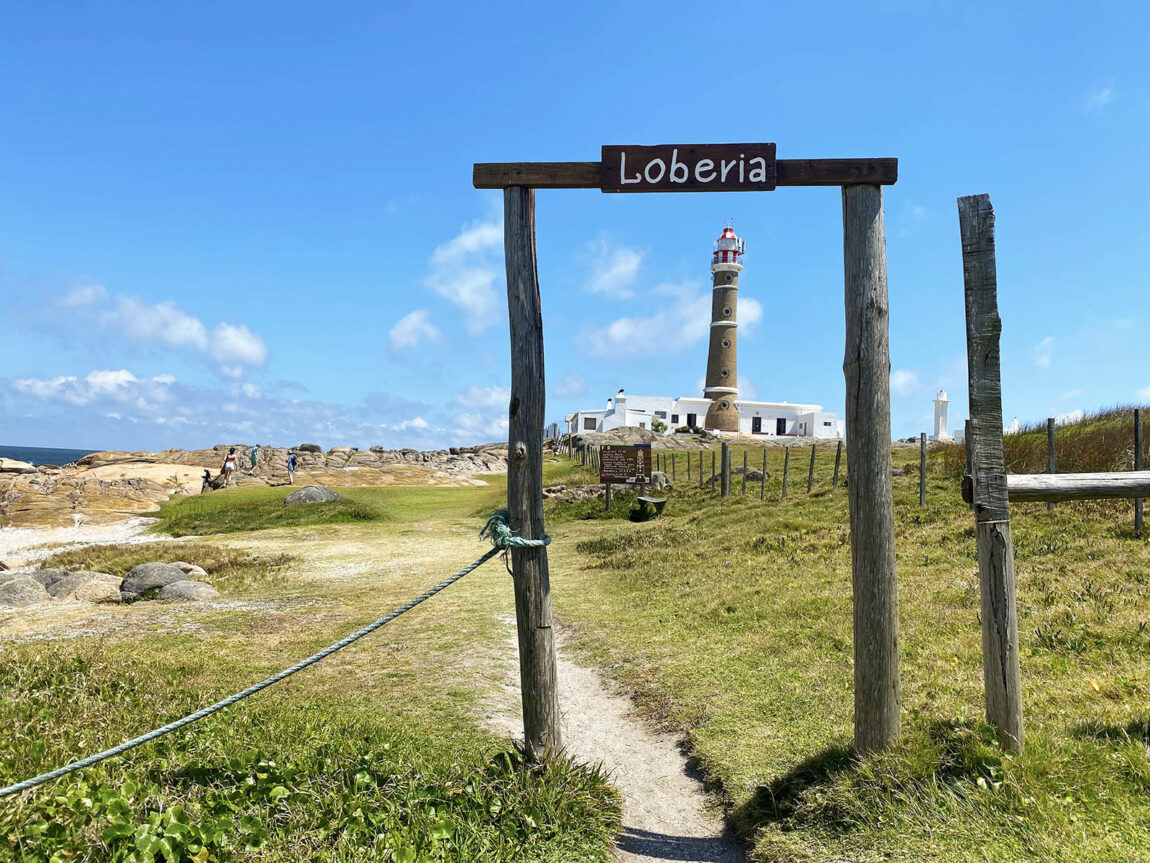
Surrounded by several legends and stories, the lighthouse of Cabo Polonio offers breathtaking views as it stands guard over this one-of-a-kind town.
I am fascinated by lighthouses – maybe it’s because of their mysterious aura, the enigmatic legends and ghost stories which are always attached to them, or because it’s just easy to close your eyes and imagine a lighthouse shining brightly in the middle of a storm to prevent potential shipwrecks. Either way, if I’m visiting a town and there is a lighthouse, you can be sure that it will be included in my travel itinerary.
Obviously, when we visited Cabo Polonio back in 2019, a stop at the lighthouse was a must – and it’s conveniently located a short walk from the center of town. This lighthouse is one of the most iconic attractions of Cabo Polonio, standing tall above the tiny surf shacks, dominating the skyline and protecting the village. The platform on top offers breath-taking views of the town, the Torres islands, the beaches of Cabo Polonio, and the countless sea lions and seals who soak up the sun along the rocks.
Tip: Make sure you bring comfortable shoes/flip flops because to get to the top you will need to climb a total of 132 steps. The path to the lighthouse can be wet from ocean spray.
In 1976, the Cabo Polonio lighthouse was designated a Historical Monument of Uruguay and it is the most visited attraction in this sleepy bohemian beach town. The height of the lighthouse is 26 meters but combined with the elevation of the rocks where it sits on, it reaches 40 mts.
A bit of history
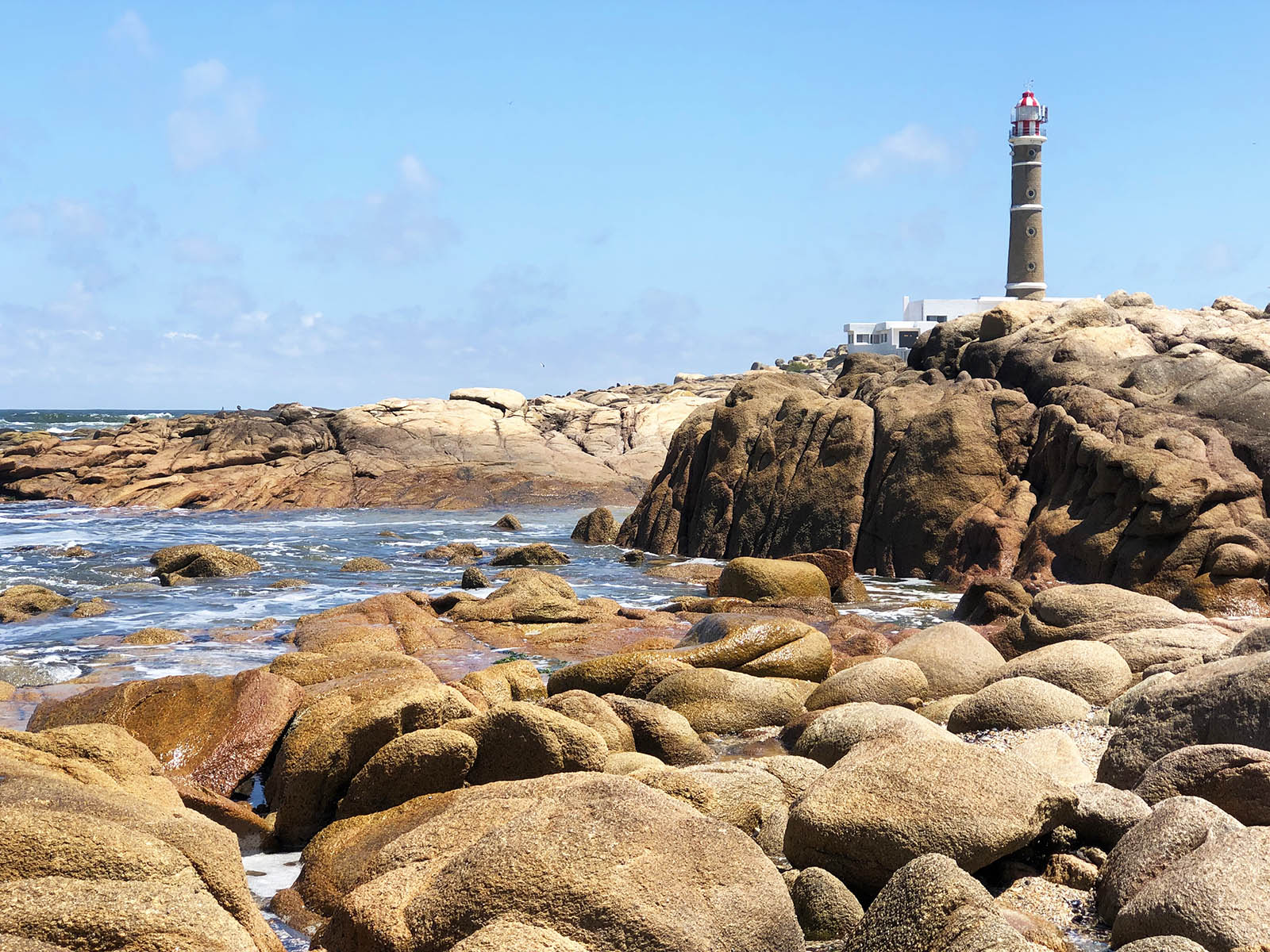
The lighthouse of Cabo Polonio. Credit: Carolina Valenzuela
The lighthouse of Cabo Polonio was first lit on May 1, 1881 to prevent the frequent shipwrecks on the dangerous, rocky coastline.
The first lighting system was fueled by horse-fat, but it was later replaced by the grease or oil from the sea-lions as they were a plentiful resource living nearby on the beach. In the early days, keeping a lighthouse was not an easy task and was incredibly lonely. Lighthouse keepers would have to climb the long and winding staircase to reach the top of the tower to keep the flames alive. When it was “modernized” with a motor and gears, the salty environment would force the keeper to wind up the motor every three hours (what a workout!).
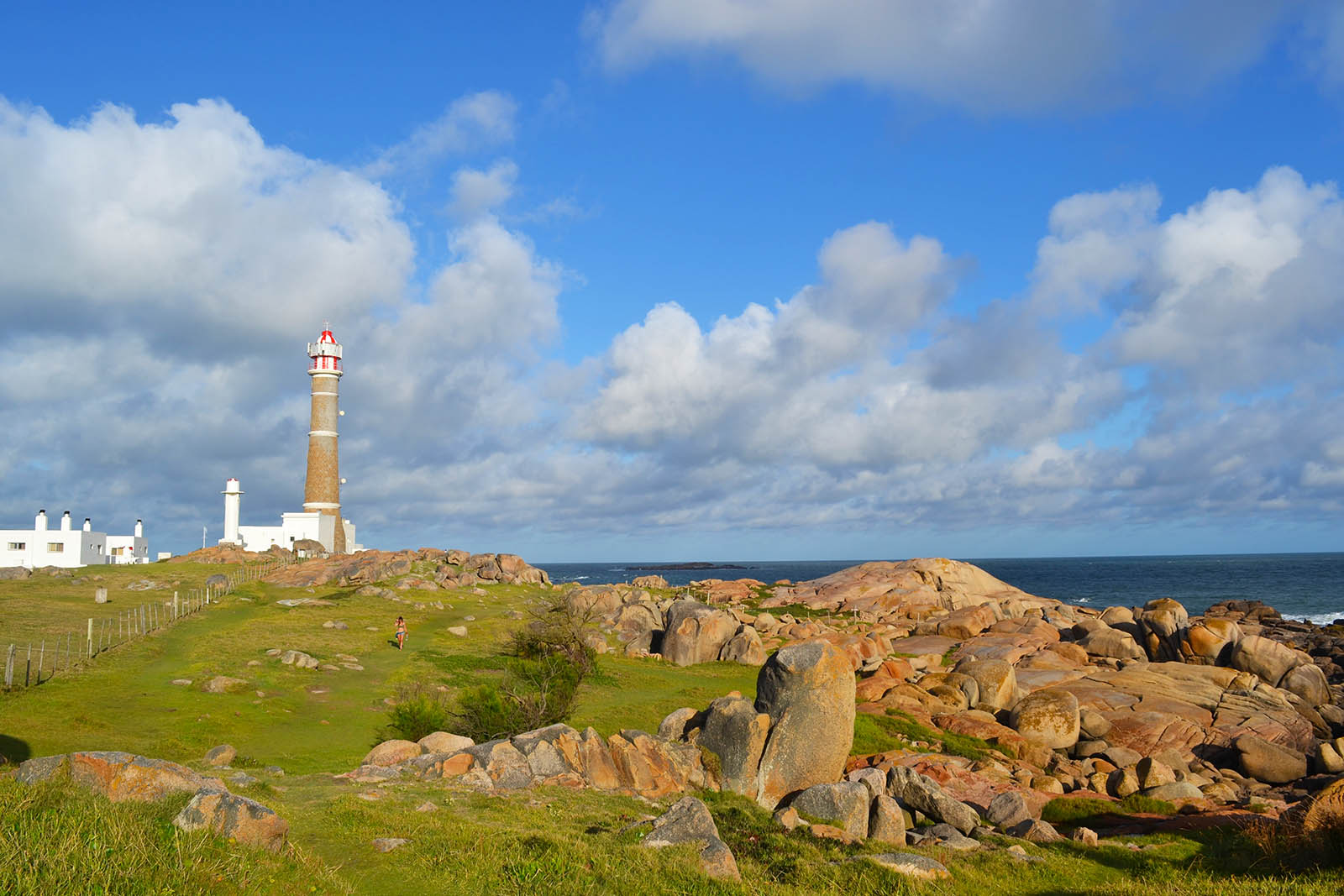
The lighthouse of Cabo Polonio. Credit: Niki Biller
The first lighthouse keeper, Pedro Grupillo, established the long-held tradition of using the lighthouse as his living quarters. Today, with all the trappings of modern transportation, Cabo Polonio can be a difficult journey to undergo; It’s amazing the capacity humans have to adapt to any environment, as back in the 1880s the trip must have much harder and life for him must have been extremely lonely!
In 1911, a new optics system was installed which significantly increased the power of the signal emitted by the lighthouse. With this improvement, the lighthouse of Cabo Polonio became a fundamental instrument for navigation in the area as one of the most powerful in the coast of Uruguay.
The legends
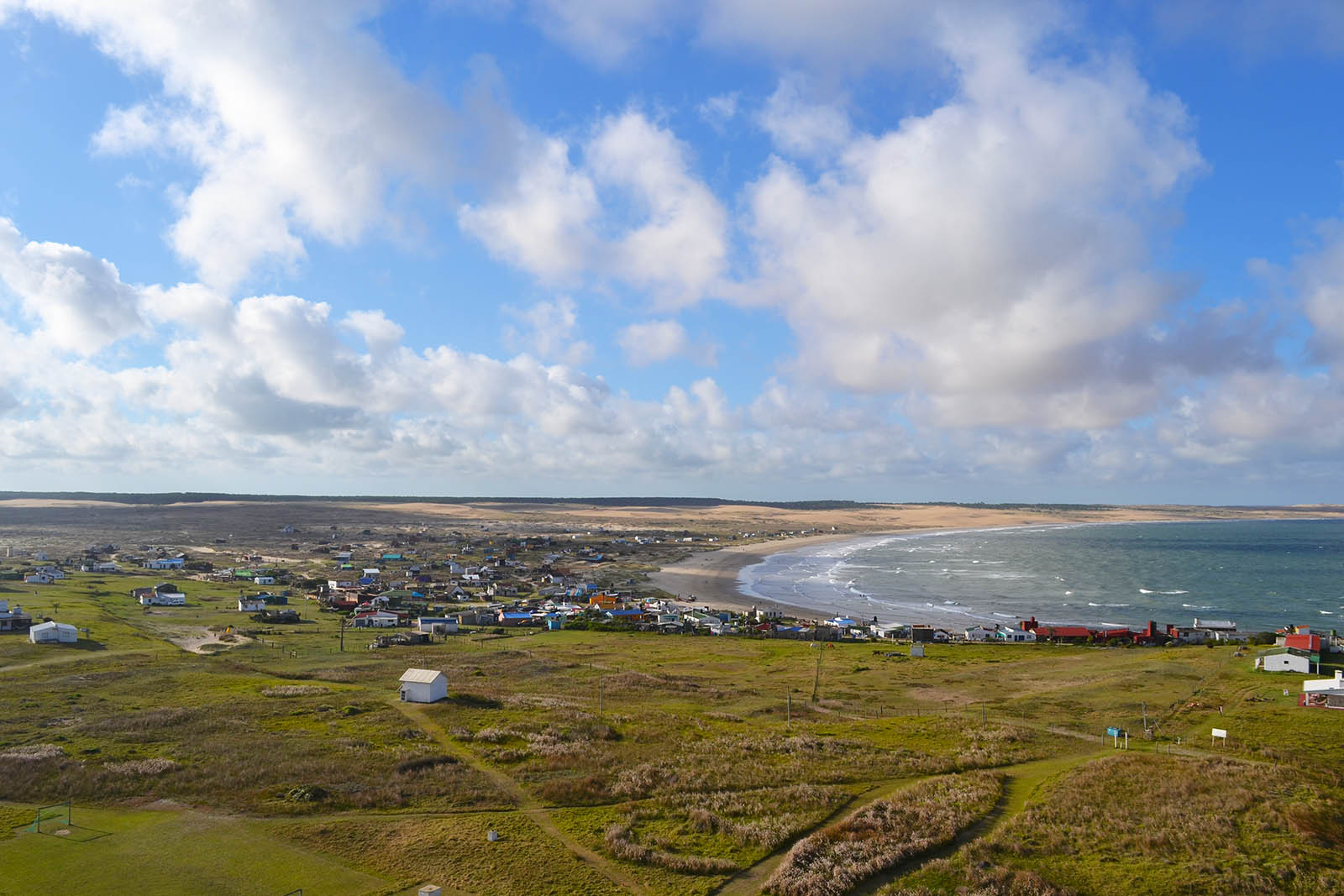
View towards the village. Credit: Niki Biller
Legend has it that when Cabo Polonio was an inhospitable and lonely fishing village – an unnamed lighthouse keeper, and his wife, arrived to perform the particularly important job of maintaining the beacon. The wife who was pregnant suddenly went into labor; the lighthouse keeper rushed to the capital to find a midwife who could assist with the delivery.
Unfortunately, a huge storm erupted on the village and delayed his return for almost a week. His wife who had no other choice but to give birth alone had to walk the 132 steps to the top every day, carrying her newborn in her arms, to ensure the beacon was lit every day to prevent shipwrecks.
This is where the legend gets murkier: over time the lighthouse served as a school for the small number of children and fishermen living in the village who couldn’t read. Some say, the teacher was none other than the lighthouse keeper’s wife – the same strong woman who braved giving birth alone and lighting the beacon every day.
And who doesn’t love a good pirate legend? I know my husband can’t miss one so I have to tell everyone: ship captains and pirates were afraid of the water surrounding the lighthouse as they believed the lighthouse was haunted! The ghosts trapped in the lighthouse held lots of power over the coast, causing compasses to spin wildly and instruments to stop functioning – these old sea dogs thought these ghosts caused all the shipwrecks by lulling the ships off course into the rocks.
Opening hours and entrance fees
The entrance fee costs $30 (US$0.60) and is open daily from 10 am to 1 pm and from 3 pm to 5 pm. Keep in mind that children under 8 years of age are not allowed to go up.
Getting to Cabo Polonio
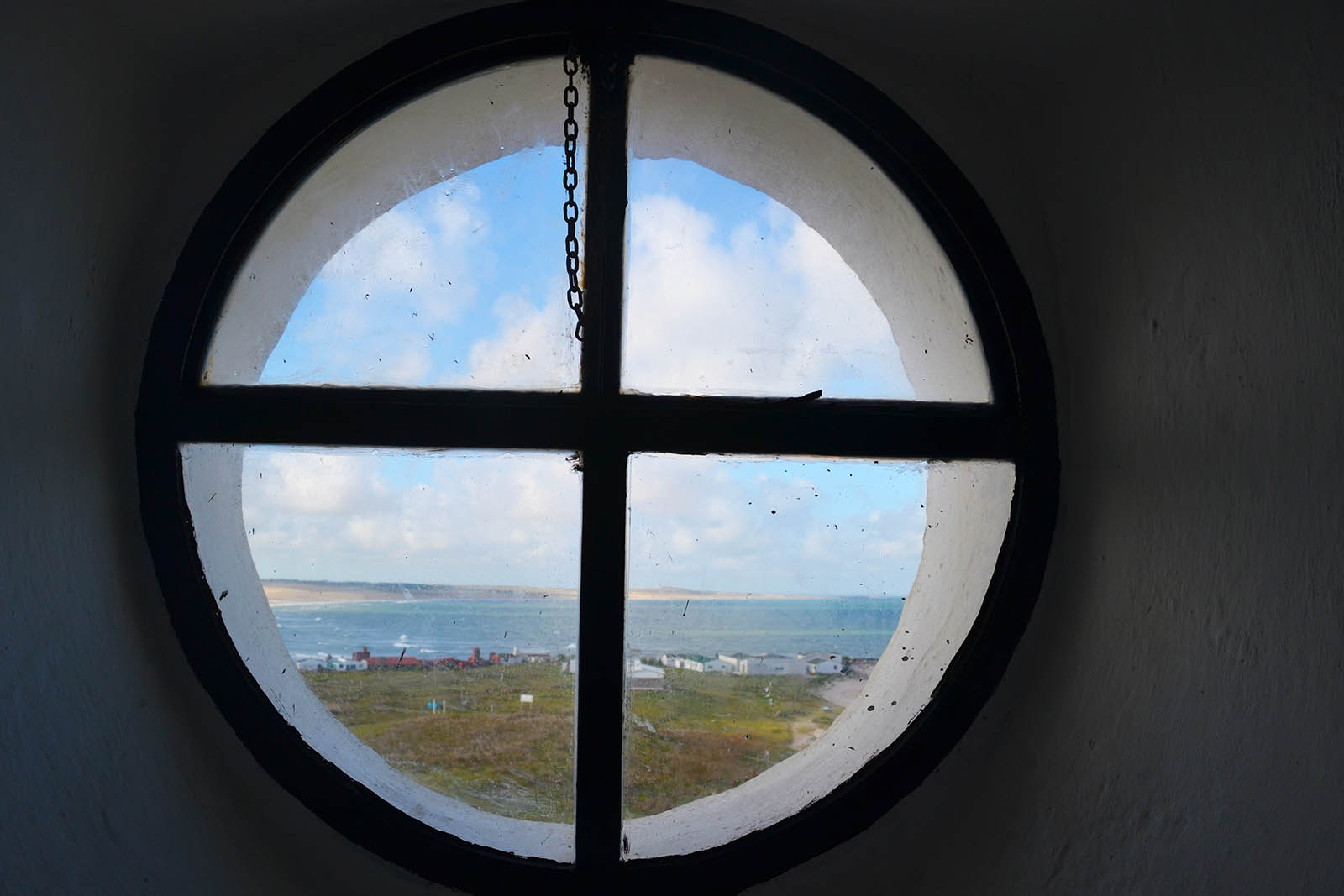
View from one of the windows of the lighthouse of Cabo Polonio. Credit: Niki Biller
Cabo Polonio is located on highway 10 (264,5km). It’s a 3 hour and 30 minutes drive from Montevideo, the Uruguayan capital.
Once you arrive in Cabo, you will not be allowed to drive into the town so you will have to park your car and take one of the massive 4X4 trucks which are the only vehicles that can cross the dunes.
It’s approximately a 20-minute ride to reach the town. The cost is $U296 (US$7) per person. Children under 5 years old go for free. Keep in mind that you will only be able to pay in cash.
We are part of several affiliate programs including Viator and Amazon which means that we will earn a small commission at no extra cost to you if you make a purchase through the links included in this post.

Carmela
That looks and sounds like a marvelous place! I am very much intrigued by the lighthouse. Thank you for this very helpful information!
Caro
CarmelaHi Carmela – It is a indeed a beautiful lighthouse which is worth visiting!
Peter
I am planning to visit Uruguay this December. Do you suggest I bring hiking shoes or sandals for visiting the lighthouse of Cabo Polonio?
Caro
PeterHello Peter. To visit the lighthouse of Cabo Polonio I recommend you bring flip flops as you will be walking on the beach to get there. This will prevent you from having sneakers full of sand!